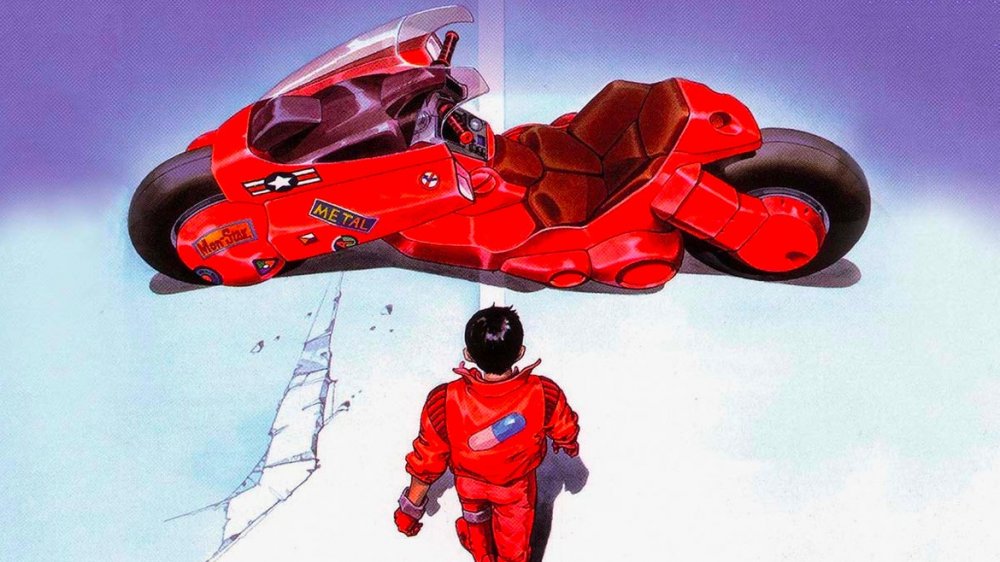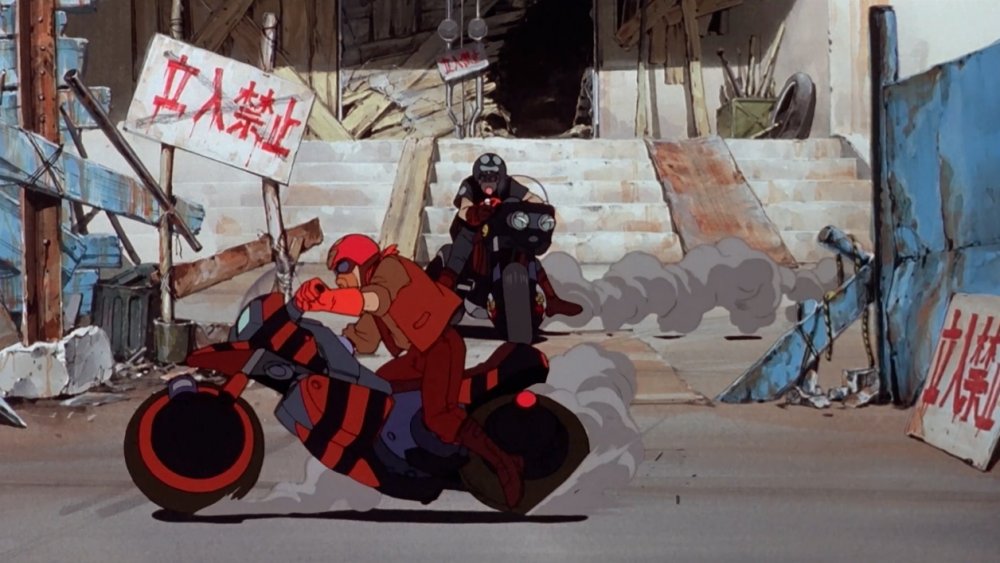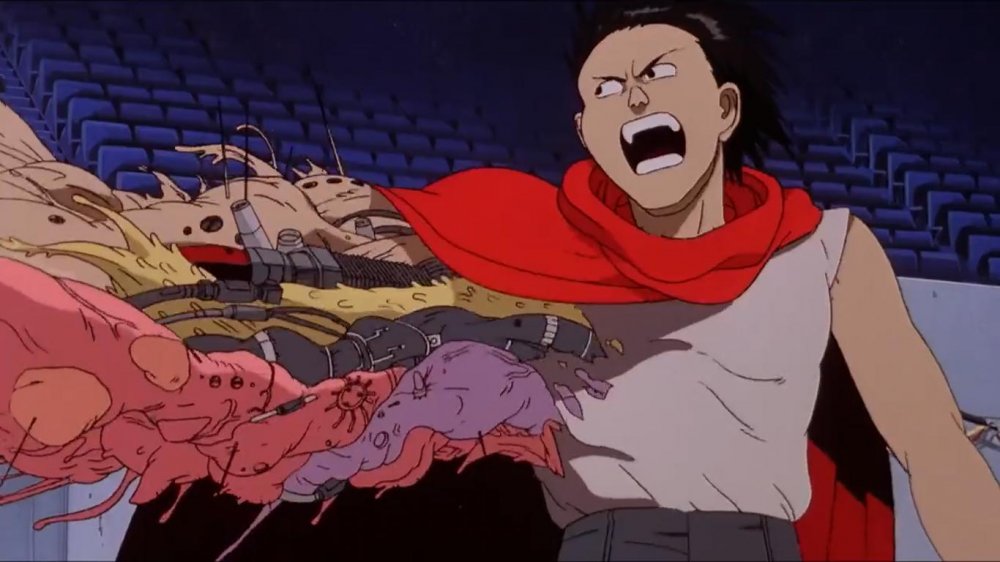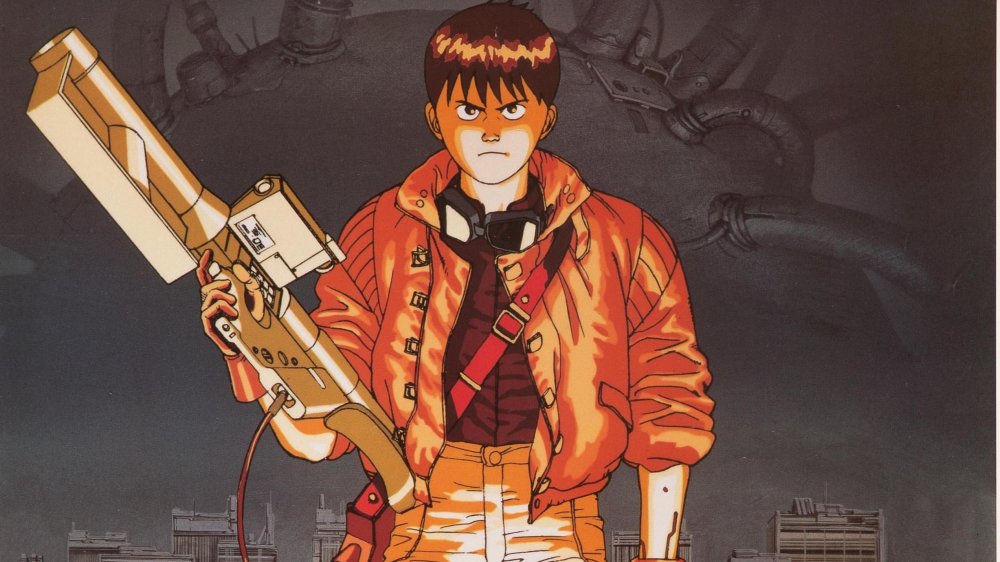The Sci-Fi Anime Classic You Need To Watch On Hulu
Storytellers frequently imagine what the world will be like in the near future, but seldom do those stories ever portray things turning out well for our heroes, the human race. Perhaps one of the most famous and beloved dystopian future stories is not a novel or a live-action film, but an animated movie based on a 2000-page manga.
Akira weaves the story of a cyberpunk city called Neo Tokyo on the brink. This iconic tale features biker gangs, emerging telepathic superpowers, and — as always — amoral scientists pushing the ethical limits of their craft to its breaking point. First released in Japan in 1988, Akira is one of those absolute must-see movies if you love dystopian futures with a healthy bit of cyberpunk mixed in. Basically, if you love Blade Runner and you haven't watched Akira, you are not living your best life.
The good news is that Akira is currently streaming on Hulu, so you could theoretically watch it this very day even if you've already seen it before. In case you need convincing, let's go over what makes Akira so influential and great.
Akira has a bone-rattling score
About a year after Akira made its Japanese debut, it started filtering into English-speaking mom-and-pop video rental shops. For a lot of Americans in the 1980s, Akira was their first real experience with adult, Japanese animation. Even with a goofy, dubbed English audio track (which famously features mispronunciations of basically every character's name), viewers instantly became fans of the soundscape of Akira – and with good reason.
Before Akira even began animating, director Katsuhiro Ôtomo reached out to composer Tsutomu Ohashi a.k.a. Shoji Yamashiro. Ôtomo, who was enamored with Yamashiro's musical collective, Geinoh Yamashirogumi, felt that the team's blending of traditional Japanese instrumentation with digital manipulation would be perfect for Akira; he was right.
What Geinoh Yamashirogumi unleashed unto the world with their Akira score is nothing short of a breathtaking masterpiece — literally since the score features deep breathing and guttural growls intense enough to wear any listener out just from hearing them. The themes the team was given to work with (since there was no movie yet) were "festival" and "requiem." What they crafted was a celebratory, apocalyptic wake; a throbbing, thumping house party set to a beat that could bring all of human history to its knees.
It's not just Akira's score that's so effective in shaking our collective teeth either — the entire soundscape of the original Japanese audio track still stands, to this day, as one of the most immersive in cinematic history. There is a sequence early on in which two dueling biker gangs race, and — if you close your eyes and just listen — you'd swear you were there, in that alternate 2019 Neo Tokyo world, motorcycle straddled between your legs on a high-speed chase toward oblivion.
Akira animation helped us see that cartoons could be serious
Akira had a massive pricetag for the time of its release: 1.1 billion yen (or about $8 million). The reason for the enormous cost was the sheer scope of the production. 160,000 animation cels were produced, and — because this was cel animation (a process seldom used today) — animators were required to do more than handle the characters in each cel. These hardworking visual artists were tasked with animating — in pain-staking detail — both the background and foreground along with everything else in between.
What that technical work translates into is an organic Neo Tokyo, one where the city is perpetually in motion. The lights in the windows were animated and colored separately. Every set piece holds intimate detail and almost nothing gets reused. The animators had to capture all that, while also breathing life into body horror elements the likes of which would make even Clive Barker and David Cronenberg blush.
The fashion of the characters is so intricately done and so thoughtfully designed that it still looms large in the public consciousness. Kaneda's red biker jacket, for example, is weathered and has this fantastic detail on the back of a pill capsule. People will spend good money for replicas of Kaneda's look, even if they're not big Akira fans — it looks that cool!
The great irony is that Ôtomo was convinced he had a flop on his hands. Not unlike Blade Runner, however, it was precisely this level of visual detail to set Akira on a course to become the gold standard for animated storytelling (sorry, Disney).
Akira is one of the scariest stories ever adapted
Even if the score was just okay, even if the animation had been standard, Akira would still be unforgettable for the story alone. Not unlike Godzilla, Akira's story is one filled with deep paranoia over humankind's own technological hubris. Akira's Neo Tokyo is so "Neo" because the original Tokyo was obliterated by a mysterious singularity, one that could be repeated at any time. The destruction of the old world leaves, in its place, a new one, fraught with gang warfare, a distrust of an omnipotent government, and the rapid disintegration of Japanese society.
Put simply: the collective anxiety Japan was experiencing in the 1980s is very similar to what most people are experiencing all over the world right now. Akira is a story about progress without direction and technological leaps before pragmatic looks. Neo Tokyo presents a world where one unstable person can be gifted the power to end it.
People have been trying to make a live-action Akira for years. Taika Watiti was set to direct one recent attempt before Thor: Love and Thunder came along. And everyone from Keanu Reeves to Keira Knightly has been rumored to be part of the project. If there ever actually will be a live-action Akira is anyone's guess. In the end, what we do have is an animated adaptation of one of the scariest stories ever conceived — and it's scary not because of what has happened, but because of what we all know in our deepest and most terrified selves is inevitable.
If only we could see the writing on the wall, maybe we could stop it. Akira is streaming on Hulu now.



